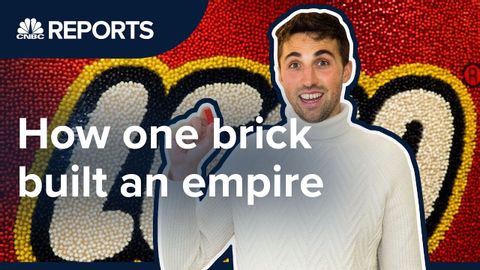How LEGO kept a plastic brick relevant for 60 years | CNBC Reports
joey joey が 2021 年 06 月 08 日 に投稿  この条件に一致する単語はありません
この条件に一致する単語はありませんUS /ˈkɑɡnɪtɪv/
・
UK /ˈkɒgnətɪv/
- adj.認知の;認知能力の;認知発達の;認知療法の
US /ɪn'gedʒ/
・
UK /ɪn'ɡeɪdʒ/
- v.t.武力によって衝突する;雇用する;人の興味を引く;従事する;かみ合う;約束する
US /məˈtɪriəl/
・
UK /məˈtɪəriəl/
- n. (c./u.)衣料;原材料;原料
- adj.関連な,重要な;世俗的な : 物質的な : 物質でできた
US /ˈmʌltəpəl/
・
UK /ˈmʌltɪpl/
- adj.複数の;多様な;多発性の;多重の
- n. (c.)倍数;多数;倍率
- pron.多数
エネルギーを使用
すべての単語を解除
発音・解説・フィルター機能を解除

